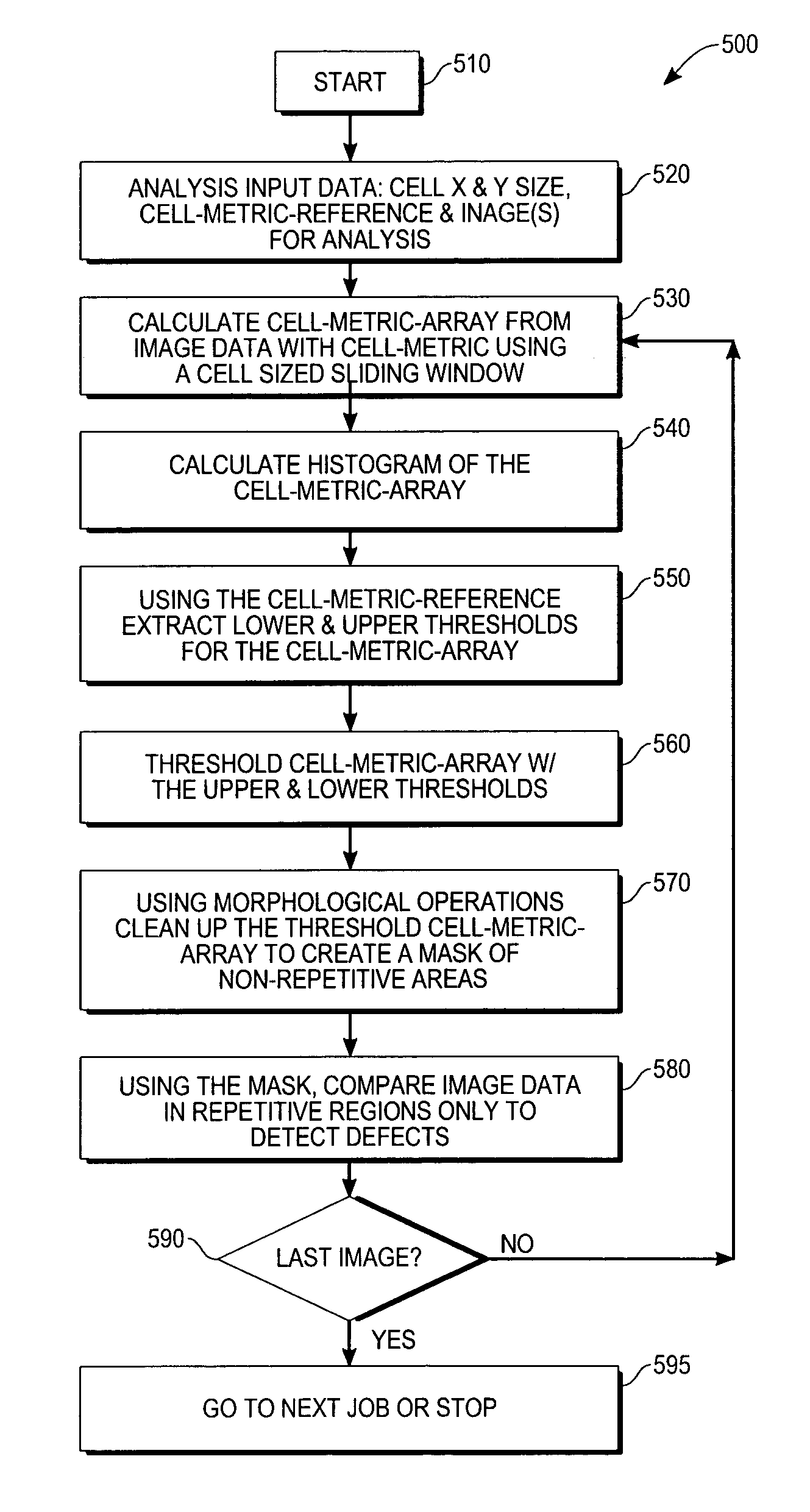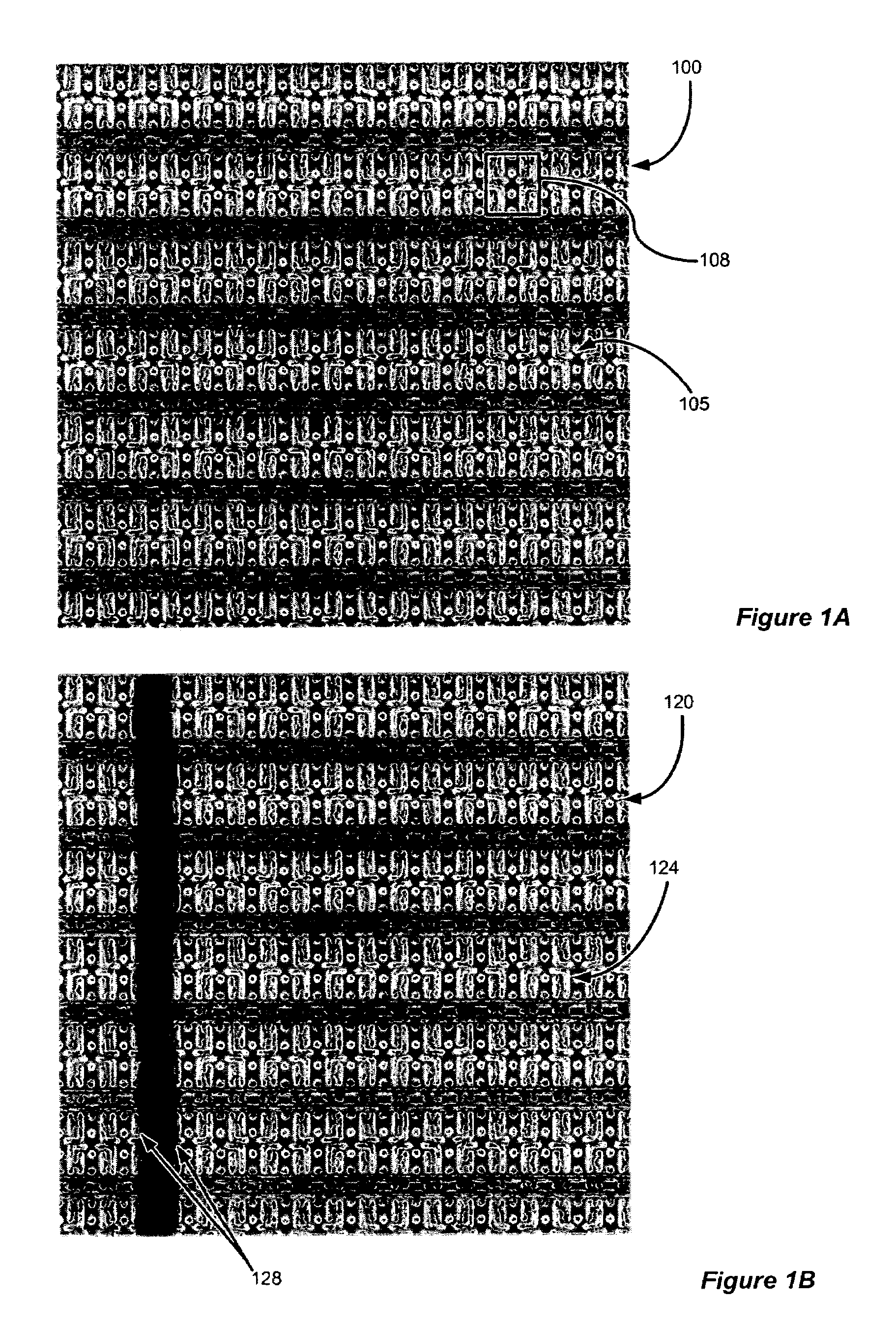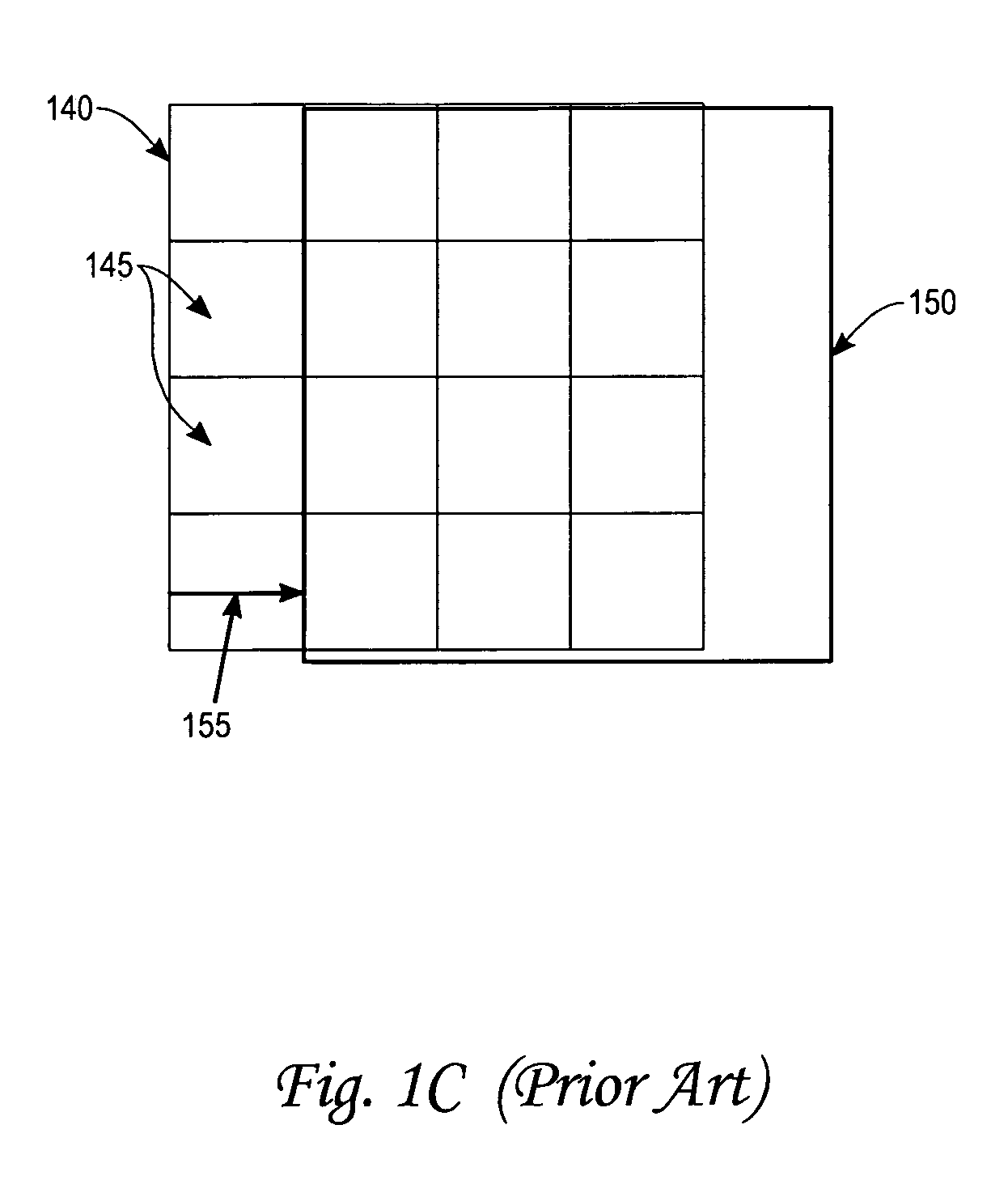Automated repetitive array microstructure defect inspection
a technology of repetitive arrays and defects, applied in the field of automatic repetitive array microstructure defect inspection, can solve the problems of increasing the sensitivity of array mode defects, affecting the accuracy of real 100% continuous defects, and reducing the actual area of true 100% continuous accurately repetitive areas, so as to reduce the impact of problems.
- Summary
- Abstract
- Description
- Claims
- Application Information
AI Technical Summary
Benefits of technology
Problems solved by technology
Method used
Image
Examples
Embodiment Construction
[0041]In the following detailed description of the preferred embodiments and other embodiments of the invention, reference is made to the accompanying drawings. It is to be understood that those of skill in the art will readily see other embodiments and changes may be made without departing from the scope of the invention.
[0042]The following terms are defined below for clarification and are used to describe the drawings and embodiments of the invention:
[0043]Cell: A single cell repeated in a microfabricated structure such as for example, a DRAM or SRAM cell (or multiples there of) in a semiconductor wafer. This may include macro-cells comprised of multiple cells reflected and combined in groups of two, four or more cells together.
[0044]Cell size: The size of the repeating cell in the X direction or Y direction usually measured in microns or pixels and sometimes also reported as a spatial frequency, for example, as a number of cells per unit length.
[0045]Array (of cells): An area of ...
PUM
 Login to View More
Login to View More Abstract
Description
Claims
Application Information
 Login to View More
Login to View More - R&D
- Intellectual Property
- Life Sciences
- Materials
- Tech Scout
- Unparalleled Data Quality
- Higher Quality Content
- 60% Fewer Hallucinations
Browse by: Latest US Patents, China's latest patents, Technical Efficacy Thesaurus, Application Domain, Technology Topic, Popular Technical Reports.
© 2025 PatSnap. All rights reserved.Legal|Privacy policy|Modern Slavery Act Transparency Statement|Sitemap|About US| Contact US: help@patsnap.com



